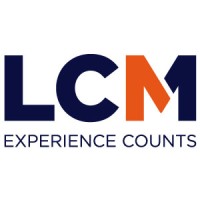
Clients trust Phillip Goter to enforce and manage their valuable intellectual property. Phil counsels organizations – ranging from startups to Fortune 100 companies – around the world, managing litigation through trial and appeal, thoughtfully obtaining patents and trademarks, conducting pre-suit investigations, advising on regulatory issues, conducting due diligence and freedom to operate analyses, and resolving complex disputes.
Phil leverages his business and industry experience when working with his clients, and they value his strategic thinking and trust his counsel regarding IP strategies that protect R&D investment and product markets.
Phil, who practices in the firm’s Minneapolis office, frequently works with high-tech clients in the computer software and hardware space. His keen familiarity with computer hardware, standards-essential cellular infrastructure, 5G, GPS, mobile apps, autonomous vehicles, artificial intelligence, machine learning, computer and network security, VoIP, wireless networking, home automation, medical devices, and cloud computing aid him in providing successful outcomes for his clients.
He has deep experience providing counsel to international businesses on U.S. intellectual property matters, including representing European and Asian consumer electronics, networking and telecommunications, and pharmaceutical companies in global IP disputes. His practice includes patent litigation in U.S. district courts around the country and before the U.S. Court of Appeals for the Federal Circuit, with the majority in key patent litigation venues such as Texas, Delaware, and California.
Phil also has significant experience with complex economic matters and his cases have included competition law issues, such as monopolization, attempted monopolization, and Walker Process and sham litigation claims. He has successfully obtained lost profits verdicts in pharmaceutical cases and has commissioned and used numerous expert surveys in litigation to prove infringement, indirect infringement, rates of infringement, apportionment, lost profits, and value of the invention.
He also has in-house counsel experience. Prior to joining Barnes & Thornburg, Phil was an investment manager and legal counsel for a global, publicly traded litigation finance and legal risk management company. He advanced the company’s IP initiatives globally and handled U.S. litigation matters through the entire life cycle of the litigation funding relationship, including sourcing, evaluating, and monitoring IP and commercial investments through to resolution.
Outside of his legal practice, Phil teaches intellectual property at the University of Minnesota Law School and can often be found at the hockey rink, coaching his three children’s youth hockey teams.
Company Name and Description: With more than 800 attorneys and other legal professionals, Barnes & Thornburg is one of the largest law firms in the country. We serve clients worldwide from offices in Atlanta, Boston, California, Chicago, Delaware, Indiana, Michigan, Minneapolis, Nashville, New Jersey, New York, Ohio, Philadelphia, Raleigh, Salt Lake City, South Florida, Texas and Washington, D.C. We provide guidance in more than 50 dedicated practice areas, including litigation, intellectual property, labor and employment and corporate law. We are where you need us. Find out more at btlaw.com.
Company Website: btlaw.com
Year Founded: 1982
Headquarters: Largest office is in Indianapolis
Area of Focus: Intellectual property
Member Quote: Litigation finance has become an increasingly important financial tool for IP owners, who often find themselves disadvantaged by large, well-capitalized competitors. In this lopsided dynamic, non-recourse capital from trusted legal funders gives me the ability to right the harms inflicted upon my clients.





 " />
" />


